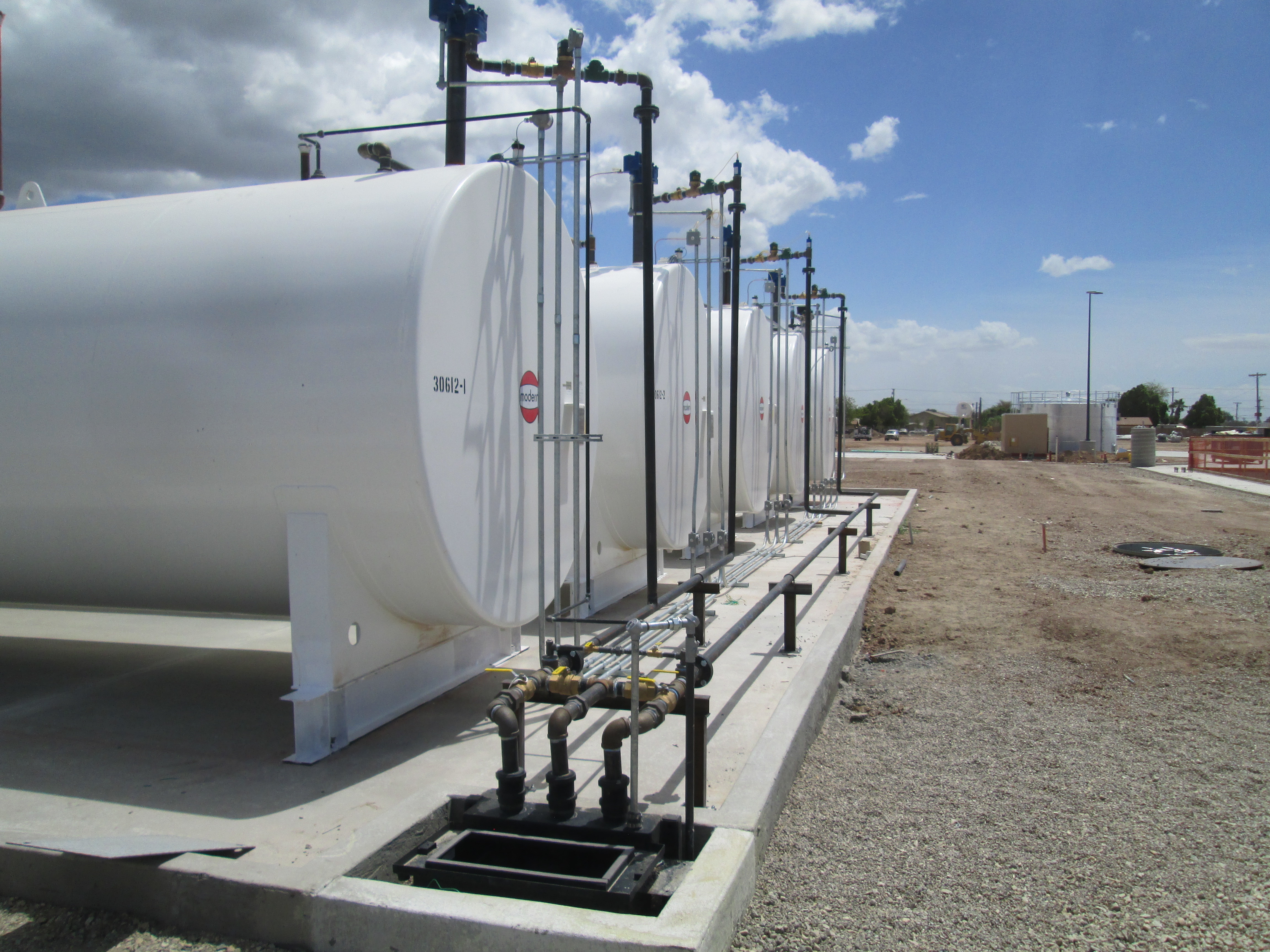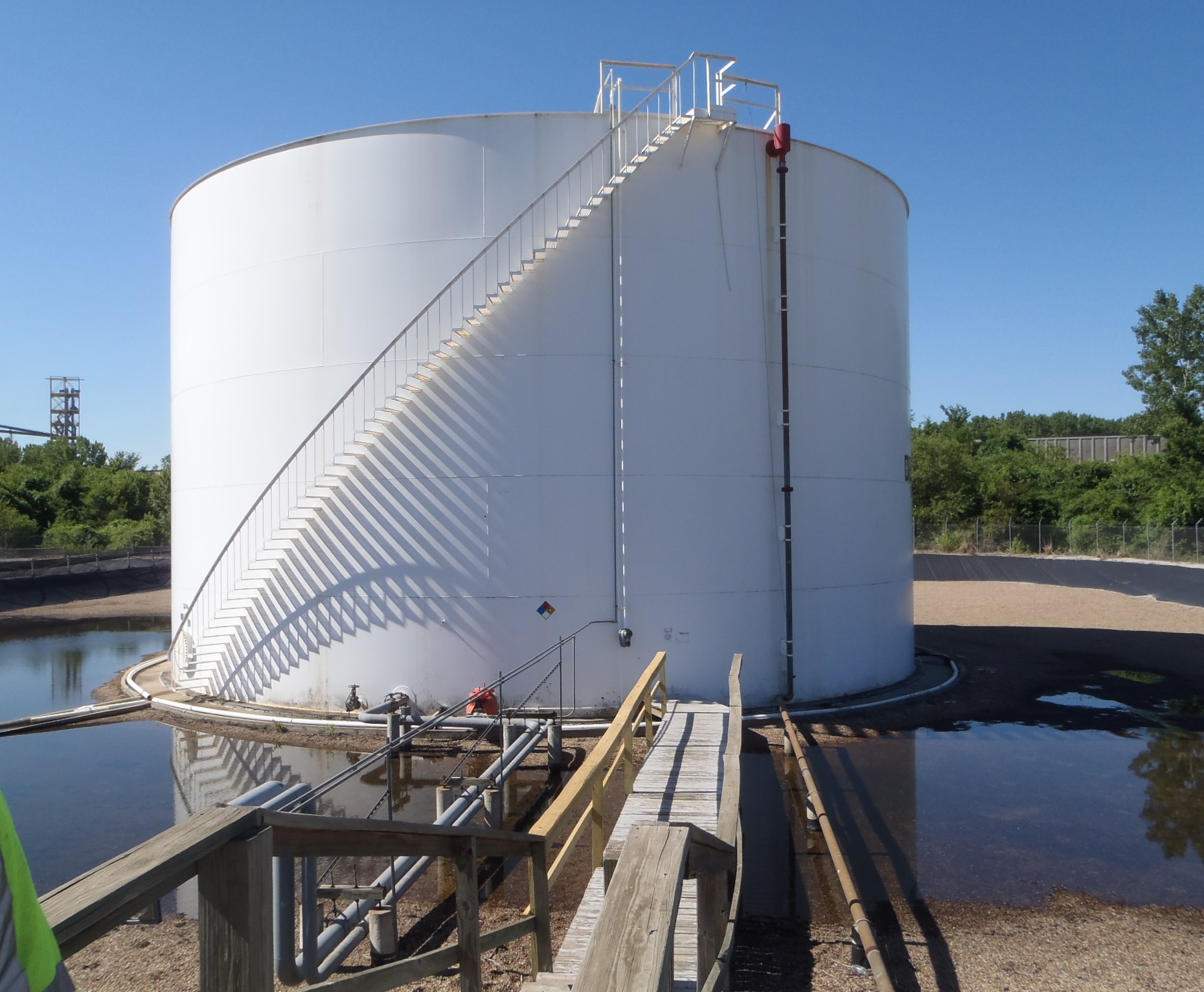

Aboveground Storage Tanks (ASTs) are ubiquitous across different industries today including transportation, manufacturing, oil & gas (exploration, production, refining, and distribution), mining, construction, technology, and food and beverage to name a few. If these ASTs contain oil (as defined by 40 CFR 112.2) and the facility meets the criteria indicated, then the ASTs must be managed according to the Federal Oil Pollution Prevention regulation 40 CFR part 112, which requires the facility owner/operator to prepare, amend, and implement a Spill Prevention, Control, and Countermeasure (SPCC) Plan.
The SPCC Rule applies to facilities that:
As the owner/operator of an SPCC-regulated facility and as part of your associated SPCC Plan, tank integrity inspections and management is non-negotiable and as such, you must “test or inspect each aboveground container for integrity on a regular schedule and whenever you make material repairs… in accordance with industry standards.” (40 CFR 112. 8(c)(6))
Besides the federal SPCC regulatory requirement for tank integrity inspections (Yes, it is a BIG ONE! No one wants hefty EPA fines!), what other benefits are there to proper tank inspection and maintenance?
For one, there might also be state and local regulations that require AST inspections (with potential additional fines!). These include:
Besides all the regulatory drivers, another benefit to proper tank integrity inspection and maintenance is it just makes good business sense. Keeping your ASTs in good working order is a best practice. After all, doing so can save your company thousands, if not millions, of dollars in product loss, environmental cleanup, and damage mitigation should one of your ASTs leak, rupture, or catch fire.
As the facility owner/operator, is it clear what you need to do to implement a proper above-ground storage tank integrity inspection program in accordance with SPCC requirements? If not, the Steel Tank Institute (STI) and American Petroleum Institute (API) have developed the following industry standards to help guide SPCC facility owners/operators with tank integrity management:
The Standard for The Inspection of Aboveground Storage Tanks (STI SP001) was developed by the Steel Tank Institute (STI) to assist owners/operators of shop-built ASTs with tank integrity management. The standard provides inspection and evaluation criteria required to determine the suitability for continued service of ASTs, at atmospheric to 1 psig, until the next scheduled inspection. It is applicable to ASTs storing stable, flammable, and combustible liquids and can be applied to AST storing other liquids following proper evaluation. The standard covers all shop-built ASTs (75,000 gallons or less) including steel single- and double-walled tanks, steel diked tanks, concrete exterior tanks, and portable containers such as drums and totes.




In addition, the standard covers field-erected ASTs of limited size (up to 30 feet diameter and 50 feet height, or approximately 264,000 gallons capacity).
As required by SPCC regulations, STI SP001 establishes “the frequency and type of testing and inspections” according to “container size, configuration, and design.” (40 CFR 112. 8(c)(6)). It takes the guesswork out of compliance with SPCC tank integrity management. The standard uses a risk-based inspection matrix divided into three risk categories depending upon tank configuration, containment, and spill protection criteria with Category 1 being the lowest risk and Category 3 being the greatest risk. These risk categories, when combined with tank size, provide the AST owner/operator with the frequency and method of inspection to be compliant with the SPCC regulations.
| STI Inspection Type | What to inspect? | Where to inspect? | When to inspect? | Who can inspect? |
|---|---|---|---|---|
| Periodic AST Inspection (P) | All facility ASTs and Portable Containers | SPCC Regulated Facilities | Monthly and Annual | Owner/Operator Personnel Knowledgeable in Tank Operation |
| Formal External Inspection (E) | ASTs with capacity 5,001 to 75,000 gallons (Category 1), or 1,101 to 75,000 gallons (Category 2), or 0 to 75,000 gallons (Category 3) | SPCC Regulated Facilities | 5, 10, or 20-year Intervals | Certified STI SP001 Inspector |
| Formal Internal Inspection (I) | ASTs at higher risk, capacity of 5,001 to 75,000 gallons (Category 2), or 1,101 to 75,000 gallons (Category 3) | SPCC Regulated Facilities | 10, 15, or 20- year Intervals | Certified STI SP001 Inspector |
| Leak Test (L) | Offered as an alternative to Internal Inspection for higher risk ASTs | SPCC Regulated Facilities | 1, 2, 5, or 10- year Intervals | Owner’s Designee |
As an AST owner/operator you may never need to have a certified formal inspection or leak test performed for your tanks, provided that the tanks are Category 1 (lowest risk) with a maximum capacity of 5,000 gallons. That’s right! You can do the required period inspections on your own.
The tank components covered by the STI SP001 inspection include:
API Standard 653, Tank Inspection, Repair, Alteration and Reconstruction, was developed by the American Petroleum Institute (API) to assist owners/operators of Field-Erected ASTs, built to API 650 or API 12C Standards, with tank integrity management. The standard provides minimum requirements for maintaining the integrity of such tanks after they have been placed in service and addresses inspection, repair, alteration, relocation, and reconstruction of ASTs. It provides guidance for assessment of suitability of continued use, Brittle Fracture Risk, and fitness-for-service. The standard is applicable to field-erected tanks of any capacity for both riveted and welded steel construction. Although there are fewer field-erected tanks in industry than shop-built tanks, the environmental and safety risk if these tanks leak or fail is much greater. Therefore, the inspection requirements and cost of maintenance are higher.

| API 653 Inspection Type | What to inspect? | Where to inspect? | When to inspect? | Who can inspect? |
|---|---|---|---|---|
| Routine In-Service Inspections | Field-Erected ASTs | SPCC Regulated Facilities | At Least Monthly | Owner/Operator Personnel Knowledgeable in Tank Operation |
| Formal External Inspection (In-Service) | Field-Erected ASTs | SPCC Regulated Facilities | At Least every 5 years | Authorized API 653 Inspector |
| Formal Internal Inspection (Out-of-Service) | Field-Erected ASTs | SPCC Regulated Facilities | 10-30 years from initial service based on risk-based criteria, then subsequent intervals based on corrosion rate determination (~20 years) | Authorized API 653 Inspector |
Tank components covered by the API 653 inspection include:
As an owner/operator of field-erected ASTs, you may conduct the required routine in-service inspections on your own. However, every five years you must hire an authorized API 653 inspector to perform the in-service external inspection. Within 10 to 30 years following the tank being put into initial service, you must take the AST out-of-service for the API 653 inspector to conduct the internal inspection, followed by subsequent internal inspections based on corrosion rate calculations, with 20 years used as a typical interval.
AST owners/operators have two industry standards to assist in compliance with AST integrity inspection and management as required by SPCC regulation. These standards are STI SP001 and API 653. It is important for owners/operators to understand the applicability of these standards in order to efficiently and economically manage their ASTs. As an example, the owner/operator of a smaller field-erected tank of 100,000-gallon capacity could save significant cost by applying the STI SP001 standard for tank integrity inspection. The average cost of a STI formal external inspection ranges from $700 to $1,500 (depending upon tank configuration and economy of scale), whereas the cost of an API 653 formal external inspection ranges from $3,500 to $5,500. The use of STI SP001 for smaller field-erected tanks could extend the interval of a much more expensive ($10K to $20K) and safety intensive (permit confined space entry) out-of-service internal inspection out to 30 years.
Antea Group can assist you in determining the best above-ground storage tank integrity inspection standard to apply to your ASTs and has experienced inspectors who can perform your STI SP001 certified inspection needs. In addition, we can conduct authorized API 653 inspections through a contracted inspection firm.
Sign up for our monthly e-newsletter, The New Leaf. Our goal is to keep you updated, educated, and even a bit entertained as it relates to all things EHS and sustainability.